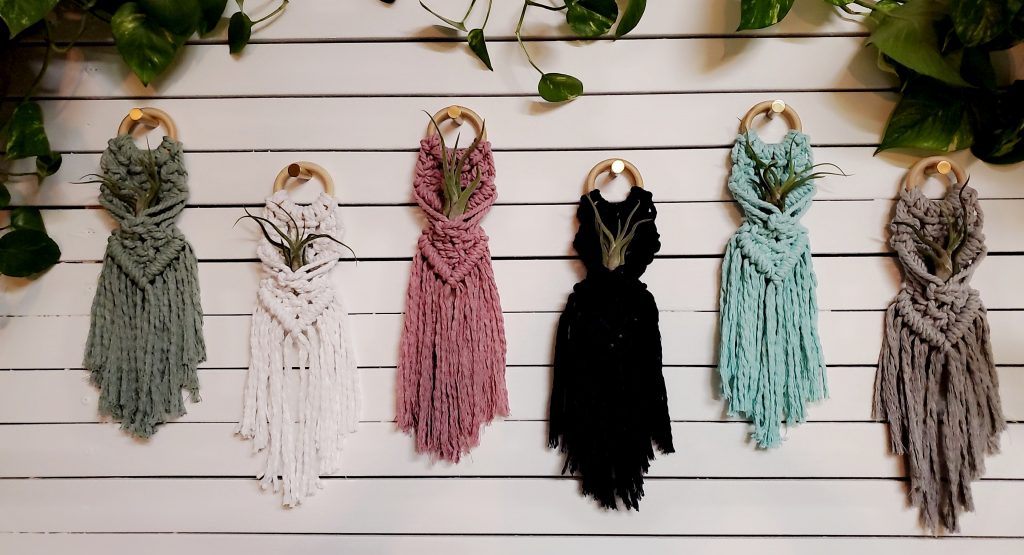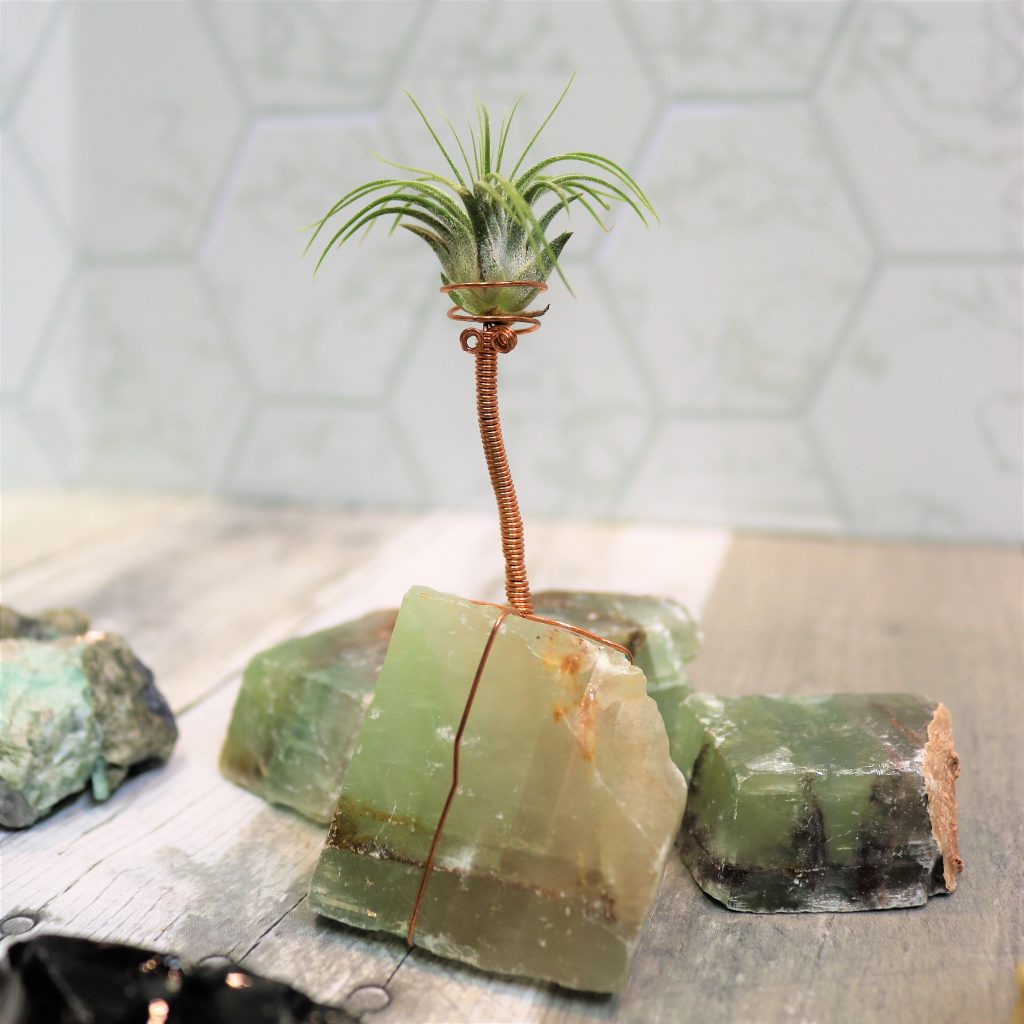Air Plant Care:

When you first receive your Tillandsia Caput Medusae Air Plant in the mail, please place your plant in the macramé pocket and hang on the wall in indirect sunlight. After about an hour lightly mist with spring water.
Soaking is not needed for this air plant, just a light mist 2-4 times a week. If your plant gets too wet just turn it upside down and lightly shake to get the trapped water out of the leaves. Over watering is the most common mistake made with these air plants.
The best home for this air plant will be a well circulated area in indirect sunlight. We recommend keeping air plants in an area where they receive a moderate amount of light. Indirect sunlight and artificial home or office lighting are appropriate for these plants. It’s generally safe to keep air plants in direct sunlight for a short period of time each day, but we recommend misting them with water every 2 hours or so to keep them from drying out if you are keeping them in direct sunlight.
The highest cause of death is overwatering but if you find the leaves of your air plants are becoming soft or pale in color or the leaves start to curl up tightly, this means the plant is too dry, and you should try misting or watering them more often.

Even more exciting is that your tillandsia caput medusae will bloom. You will notice that the center leaves will turn pale and then you will see the budding of small blossoms in the center.
One interesting fact about this beautiful air plant is that no matter which direction it is setting, it will still grow straight up, making it a great air plant to easily find many different homes for.

If you received the Tillandsia Ionantha Huamelula your care gets even easier. These mini air plants are watered with a light mist maybe 1-2 times a week.
When blooming, the leaves will turn deep shades of red and produce purple tubular flowers. These will hold red blush throughout the year with more light.
Optimum temperature range for air plants to thrive is between 50 and 90 degrees F
We get our air plants from
